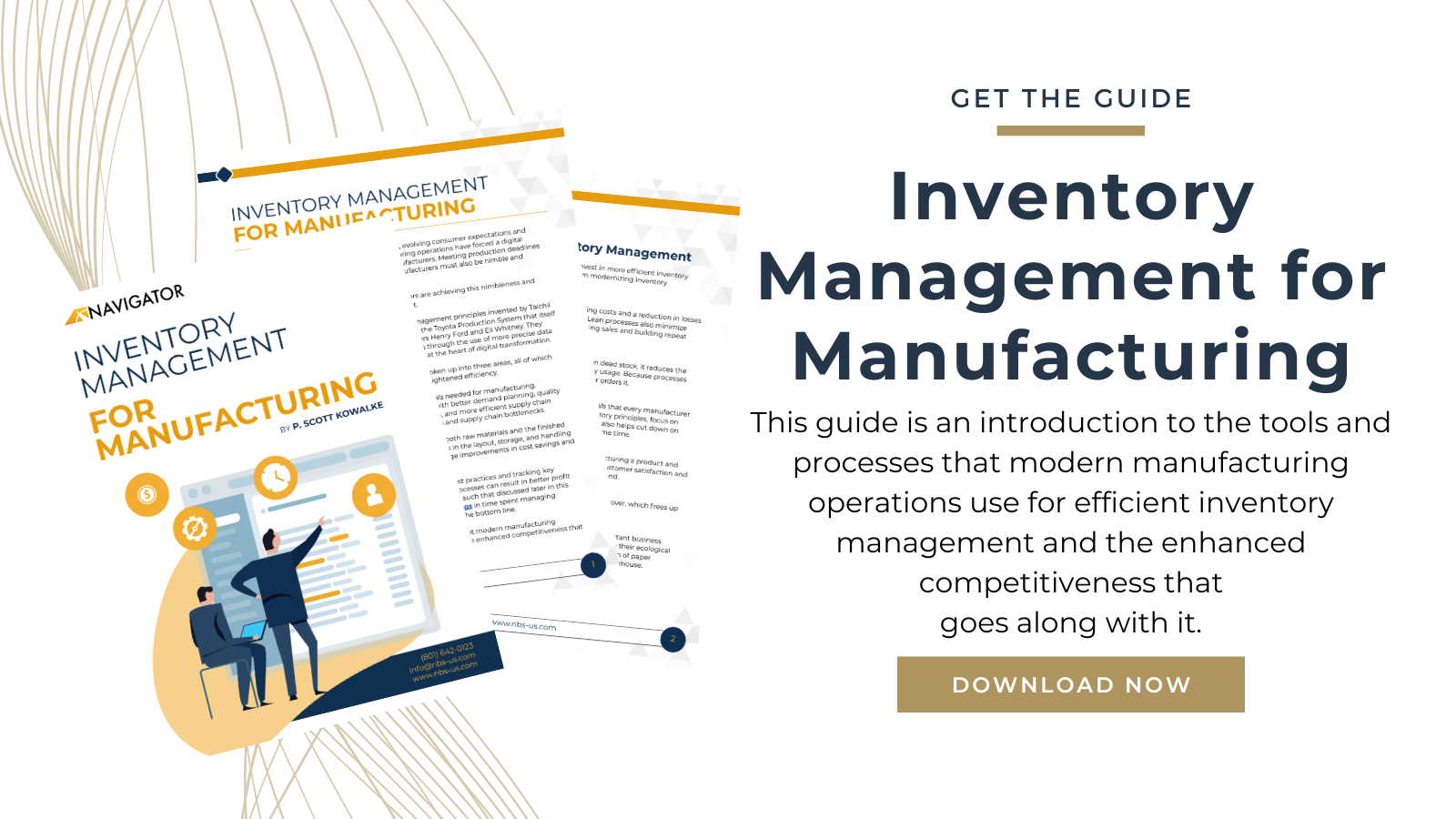
Where Automation Improves Inventory Management
Through the use of these six automation elements, manufacturers can improve inventory management in a number of ways.
We are breaking down our 'Inventory Management for Manufacturing' guide into digestible sections. You can get the full inventory management guide here.
-
Efficiency Gains through Improved Performance: Business process automation streamlines manual tasks like inventory data collection. Artificial intelligence and automation can be used to input and track data, which is then stored for later reporting and analytics.
Streamlining a variety of tasks improves efficiencies as well as overall warehouse performance, not to mention reducing errors inherent in manual processes.
Manufacturers also can use physical automation technologies for an additional level of automation, including autonomous mobile robots (AMRs) driverless automated guided vehicles (AGVs) to automated storage and retrieval systems (ASRs). Each type of automation offers a host of efficiency gains while vastly improving warehouse performance. - Increased Worker Productivity and Reduced Turnover: Warehouses have alarmingly high employee turnover rates, which average roughly 36 percent, according to the U.S. Bureau of Labor Statistics. Automation eliminates many mundane and repetitive manual tasks, both from a business process and physical labor standpoint. This frees up workers to focus on more challenging tasks, which helps with job satisfaction and overall retention.
Not only are workers more engaged and satisfied after automation, they also are able to focus on core business initiatives, planning, and growth strategies. Automation makes tasks easier and safer, which boosts overall productivity without the need to raise headcount. - Reduced Operating Expenses: Inventory automation solutions offer a return on investment within months, making them an attractive investment for manufacturers of all sizes. And because of increased productivity and efficiencies, automation helps reduce overhead while increasing throughput.
Automating business and physical processes helps lower costs for labor, equipment, maintenance, and management. Workers are also responsible for less manual entry and processes, which means there will be significantly less chance for errors. That leads to major cost savings.
Finally, automation can help lower regular operating expenses including energy consumption, the amount of storage space required, and money spent on safety incidents. - Improved Customer and Partner Experiences:
By streamlining operations throughout all aspects of the warehouse, there are fewer opportunities for error—and this leads to happier customers and business partners. Inventory moves faster and more accurately, and customers and partners reap the benefits of a better overall experience.
That improved customer satisfaction boosts both sales and brand. Warehouse automation not only improves operations today, it prepares businesses for an increasingly competitive landscape with very little room for error and inefficiency.
- Better Inventory Management:
Warehouse automation doesn't just streamline inventory and warehouse operations. It helps create a healthier inventory by reducing lost products, shrinkage, and misplacement. Manufacturers gain a granular level of management when it comes to inventory control, which translates to fewer fulfillment and shipping errors.
Automation solutions can also help coordinate the usage of material-handling equipment like barcode scanners and mobile devices. This further improves efficiencies and helps contribute to tighter inventory control. That also means manufacturers can reduce or eliminate staging in support of just-in-time methodologies for order fulfillment, creating even more efficiencies.
- Reduced Environmental Footprint: Inventory automation is better for the environment, too. It helps reduce energy usage and costs while also lowering the amount of waste generated. Better planning and streamlined processes can also reduce the amount of land used since warehouses will maximize the use of space better.
Manufacturers that deal with temperature-controlled buildings or require refrigeration will realize exceptional benefits from automation, too, as well as those that deal with hazardous byproducts as part of their manufacturing processes.
Read the next section, Process vs. Physical Automation: Warehouse Automation
